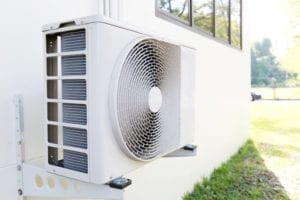HVAC Maintenance

 Winter’s on its way out – what do you do with your HVAC system when it’s warm one day and chilly the next? HVAC maintenance is a year-round job, and the monthly tasks you complete will keep your heating and cooling systems healthy throughout every season. This month, run through our March-April HVAC Maintenance checklist to keep your heating and cooling equipment in top shape.
Winter’s on its way out – what do you do with your HVAC system when it’s warm one day and chilly the next? HVAC maintenance is a year-round job, and the monthly tasks you complete will keep your heating and cooling systems healthy throughout every season. This month, run through our March-April HVAC Maintenance checklist to keep your heating and cooling equipment in top shape.
- Check your air filter. During periods of heavy heating system use, the filter should be inspected monthly to make sure it has not become full of contaminants. You may find it necessary to replace it sooner than the 3-month mark during these times, so have a replacement ready just in case.
- Inspect all registers and return air grilles in your home to ensure they have not been blocked or shut. These vents should never be blocked, as doing so will restrict airflow through your HVAC systems, which could create performance issues and system overheating.
Move all carpets and rugs, furniture, and other items away from vents. Check to see that vent louvers are open; if you wish to shut off heating to unused areas of your building, never close more than 20 percent of the structure’s HVAC vents. If you have many unused areas, consider investing in a zoning system which will allow you to reduce energy waste while facilitating proper HVAC system performance – work with a trusted HVAC contractor to design and install zoning solutions for your home or business.
- Keep the area surrounding your heating equipment clear. Never store items directly by the furnace, especially flammable or combustible material such as rags, wood, gasoline, paint, solvent, and cleaners.
- Check your smoke and carbon monoxide detectors monthly throughout heating season. Test batteries each month, using the unit’s TEST button. Vacuum away any dust which has accumulated on the detectors.
- Keep exterior vents and chimneys clear of ice and snow. Flue pipes allow the heating process’s combustion byproducts to exit the building safely – a blockage could cause carbon monoxide to leak indoors. Fresh air intake piping should also be cleared for proper ventilation.
- Change out filters and belts or begin a preventative maintenance plan with your local HVAC company
[/kc_column_text][/kc_column][/kc_row]
- 100% Satisfaction Guarantee
- High Performance Service Agreements
- 24/7, 365 Service
- 25+ Years in Business
